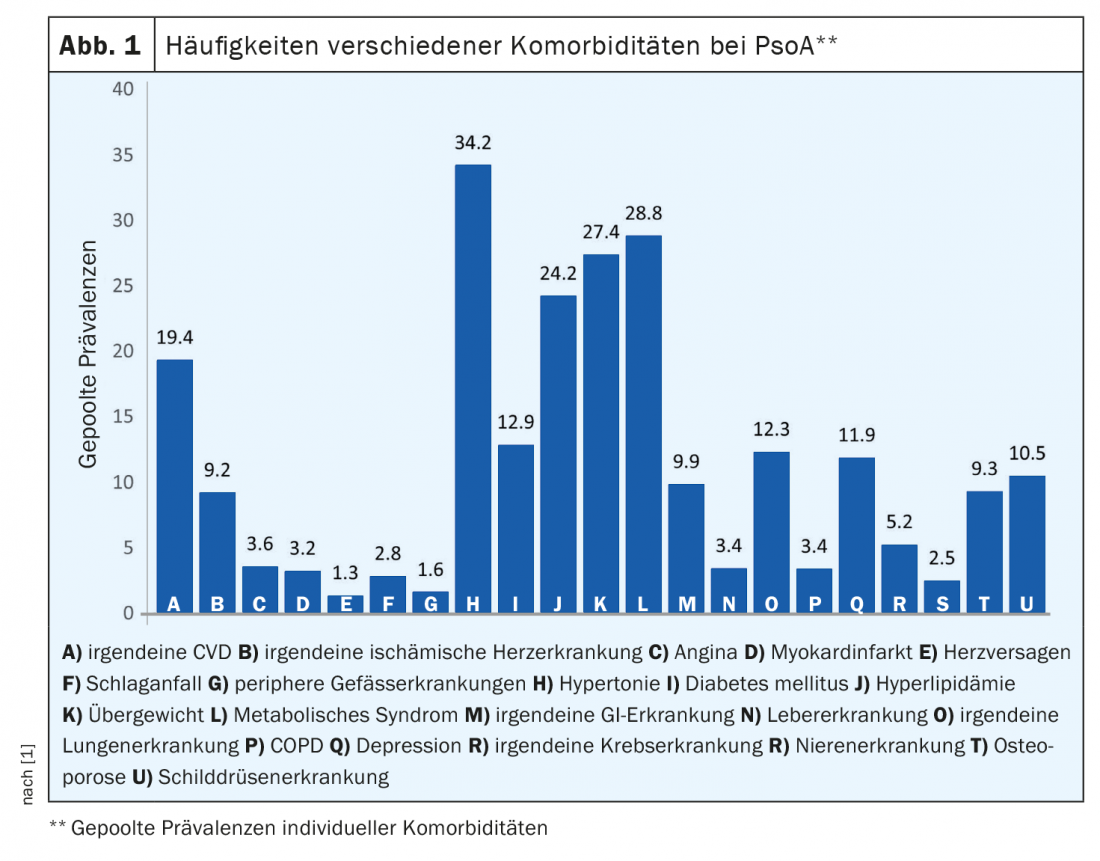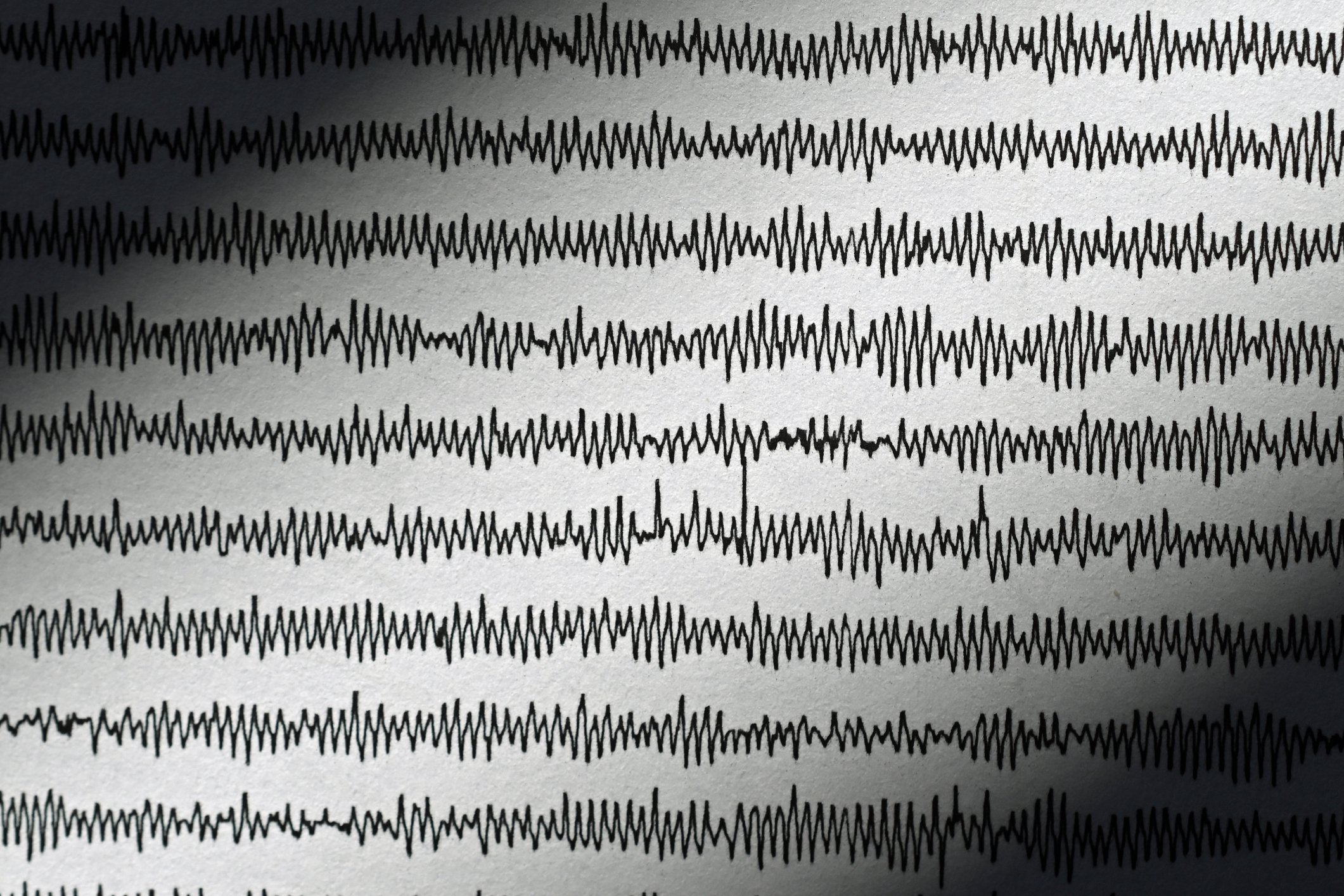Patients with psoriatic arthritis are at increased risk for metabolic comorbidities and cardiovascular disease. During the World Psoriasis & Psoriatic Arthritis Congress organized by IFPA in Stockholm, various approaches to improve cardiovascular risk assessment were discussed. In this context, recent findings on the utility of carotid ultrasonography and the atherogenic index were presented.
Up to one third of psoriasis patients develop psoriatic arthritis (PsoA) during the course of the disease. Cardiovascular disease is among the five most common comorbidities in PsoA, with a pooled prevalence of 19%, according to a secondary analysis of a total of 152 000 PsoA patients published this year in Rheumatology International (Fig. 1) [1].

Hypertension (34%) proved to be the top comorbidity ranking, followed by metabolic syndrome (29%), obesity (27%), and hyperlipidemia (24%). The clustered occurrence of cardiometabolic dysfunction has been attributed in part to the systemic inflammation characteristic of PsoA, with vascular endothelial growth factor (VEGF) and oxidative stress associated with skin psoriasis also contributing to cardiometabolic derangements [2].
What are clinical implications derived from this? Gupta et al. 2021 state that there is a need for improvement in cardiovascular risk assessment and stratification in PsoA patients [1]. This is reflected in current research efforts, including the two studies summarized below.
Case-control study of subclinical atherosclerosis.
Colunga-Pedraza et al. compared the prevalence of subclinical atherosclerosis in a sample of PsoA patients with that of a control group [3]. Carotid ultrasonography was performed to detect subclinical atherosclerosis. This allows identification of the presence of plaque deposits and increased thickness of the carotid intima media. Both are subclinical markers of cardiovascular disease [4].
Study Methods: A total of 75 PsoA patients (age range 40-75 years) who met CASPAR criteria and 75 control subjects matched for age (±5 years), sex, and comorbidities were included in the data analysis. Exclusion criteria included a history of a cardiovascular event and pregnancy. All study participants underwent high-resolution B-scan ultrasonography as part of a radiological assessment. Subclinical atherosclerosis was defined as the presence of carotid plaque or increased carotid intima media thickness (cIMT). The criterion for carotid plaque was defined as a cIMT ≥1.2 mm or a focal narrowing ≥0.5 mm in the surrounding lumen. A value of ≥0.8 mm was considered an elevated cIMT. The distribution was evaluated using the Kolmogorov-Smirnov test. Statistical comparisons were performed using Chi-Square test for qualitative variables and Student t-test and Mann-Whitney U-test for quantitative variables.
Main Results: Data analyses showed statistically significant clustered presence of carotid plaque in PsoA patients compared to control group (44.0% vs. 26.7%, p=0.026). Also significant were the differences regarding the two outcome parameters unilateral carotid plaque (25.3% vs. 10.7%, p=0.019) and subclinical atherosclerosis (52.0% vs. 34.7%, p=0.032).
Atherogenic index as a predictor for carotid plaque.
Azpiri-Lopez et al. used the atherogenic index of plasma in addition to the sonographic examination [6]. This is another measure of cardiovascular risk based on the calculation of the logarithm of the quotient of triglycerides and HDL cholesterol [7]. The comparative observational study in cross-sectional design included 64 PsoA patients (age range 30-80 years) who met CASPAR criteria*.
* CASPAR (ClASsification criteria for the diagnosis of Psoriatic ARthritis criteria) 2006 [8].
Exclusion criteria included a history of atherosclerotic cardiovascular complications (myocardial infarction, stroke, or peripheral arterial disease) and chronic renal insufficiency and pregnancy.

Examination Methods: High-resolution B-scan ultrasonography was performed in all patients. The criteria for the presence of carotid plaque were defined as a thickness of the carotid intima media ≥1.2 mm or a focal narrowing ≥0.5 mm of the surrounding lumen. Study participants were then assigned to a group of patients with vs. without carotid plaque (n=31, n=34). The atherogenic index was calculated using a logarithm with base value 10. The distribution was assessed using the Kolmogorov-Smirnov test. Also in this study, the statistical comparisons were performed using Chi-Square test for qualitative variables and Student T-test and Mann-Whitney U-test for quantitative variables.
Main Results: The study groups, which were comparable with respect to demographic and general clinical characteristics, had significantly different values in the Atherogenic Index depending on the presence of coronary plaque (patients with coronary plaque: 0.59 ± 0.34 vs. patients without coronary plaque: 0.38 ± 0.25, p=0.005). Moreover, we find that type 2 diabetes was more common in patients with coronary plaque (35.5% vs 12.1%, p= 0.02).
Congress: World Psoriasis & Psoriatic Arthritis Conference 2021
Literature:
- Gupta S, et al: Comorbidities in psoriatic arthritis: a systematic review and meta-analysis. Rheumatol Int 2021; 41: 275-284.
- Johnsson H, McInnes IB, Sattar N: Cardiovascular and metabolic risks in psoriasis and psoriatic arthritis: pragmatic clinical management based on available evidence. Ann Rheum Dis 2012; 71: 480-483.
- Colunga-Pedraza IJ, et al: Psoriatic arthritis patients have higher prevalence of subclinical atherosclerosis: a case-control study. Abstract volume, P16, World Psoriasis & Psoriatic Arthritis Conference, 30/06-03/07/2021.
- Martínez-Vidal MP, et al: Role of carotid ultrasound and Systematic Coronary Risk Evaluation charts for the cardiovascular risk stratification of patients with psoriatic arthritis. J Rheumatol 2020; 47(5): 682-689.
- Yim KM, Armstrong AW: Updates on cardiovascular comorbidities associated with psoriatic diseases: epidemiology and mechanisms. Rheumatol Int 2017; 37(1): 97-105.
- Azpiri-Lopez JR, et al: Atherogenic Index of Plasma as a predictor of carotid plaque in Psoriatic Arthri-tis patients. Abstract volume, P1, World Psoriasis & Psoriatic Arthritis Conference, 30.06.-03.07.2021.
- Fernández-Macías JC, et al: Índice aterogénico del plasma: nuevo biomarcador predictivo de enfermedades cardiovasculares. Arch Med Res 2019; 50 (5): 285-294.
- Taylor W, et al: Classification criteria for psoriatic arthritis: development of new criteria from a large international study. Arthritis Rheum 2006; 54(8): 2665-2673.
FAMILY PRACTICE, 16(8): 40-41














